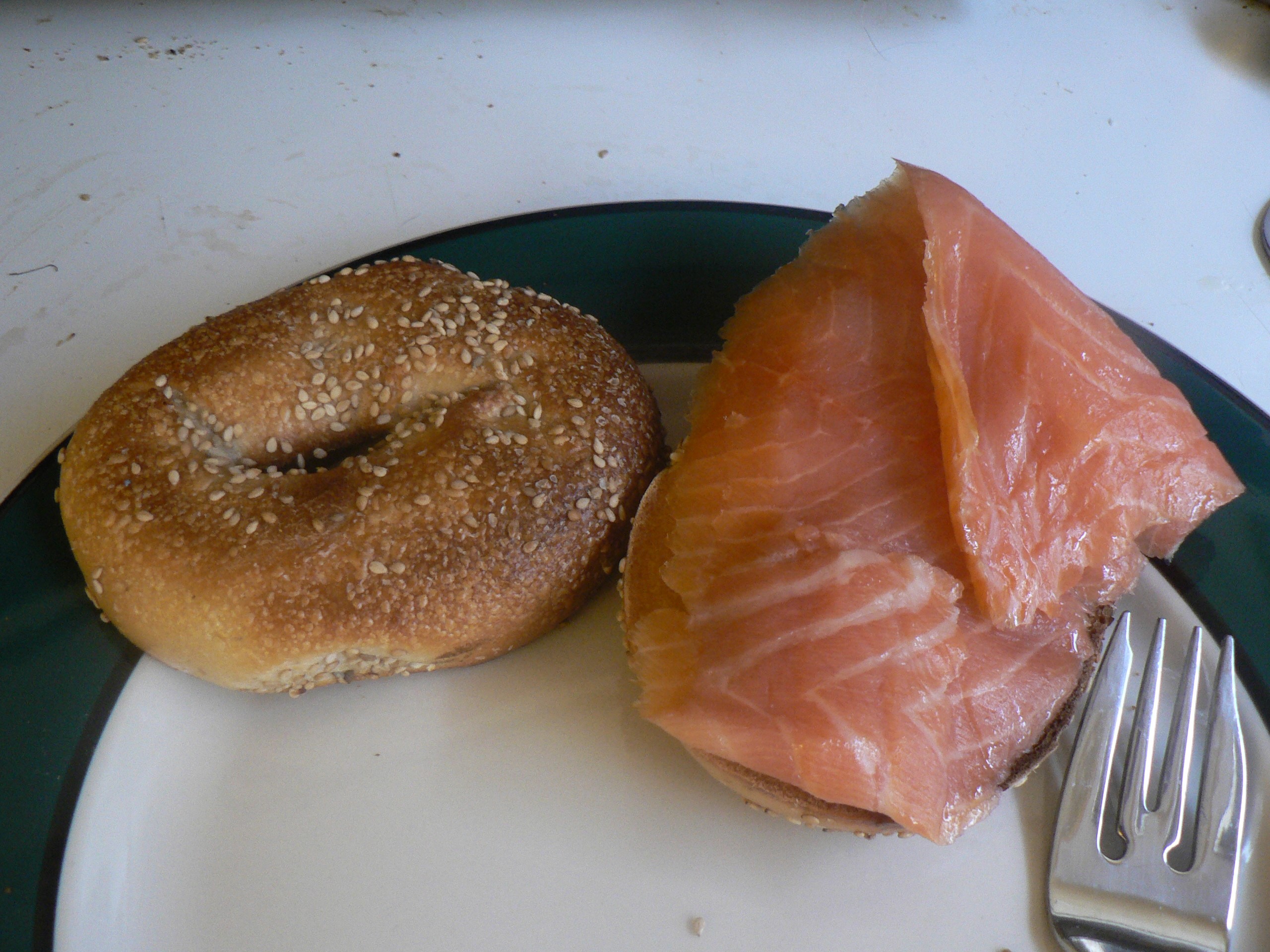Aileen Marshall


New York City is known for many things—culture, nightlife, and food, to name a few. We already know about the widely recognized style of New York pizza and hot dogs. But did you know that the city is known for having the most authentic bagels? You can now get one anywhere, from a mass produced bagel in your local grocery store (generally not recommended) to many bakeries, delis, and restaurants around town, however they weren’t always so widely available. Where did bagels come from?
Various ancient cultures had some form of a bagel-like bread. There are Egyptian hieroglyphics that depict everyday people with round shaped bread with a hole in the middle. The design makes for even cooking and allows for easy transport, since many can be carried on a stick or a string. The bagel as we know it probably evolved in Eastern Europe, particularly Poland, in the Middle Ages. The earliest mention of a bagel in writing was from 1610 in the “Community Regulations” of Krakow. There is a legend that they were invented in 1683 in honor of the Polish king Jan Sobieski for saving Austria from Turkish invaders, but the earlier mention casts doubt on the story.
Bagels came to this country with Eastern European immigrants in the late nineteenth century. By 1900, there were seventy bagel bakeries on the Lower East Side. In 1907 the International Beigel Bakers Union was founded, which had the effect of limiting production mostly to this city. As these immigrants assimilated and moved across the country, so too did the popularity of and demand for bagels. Murray Lender, a Polish immigrant, opened a wholesale bagel bakery in New Haven, Connecticut in 1927, one of the few outside New York at the time. A turning point came in 1956, when the Lenders bought a freezer. They soon realized they could ship frozen bagels to distant retailers without them going stale. Today bagels are common in supermarkets, but Lenders’ bagels are the only mass produced bagels that retain authenticity.
By tradition, bagels are made by letting the shaped wheat-based dough sit for twelve hours at a cool temperature, around 40˚ to 50˚ F. Then they are boiled for about a minute before they are baked. It is the boiling that gives them the sheen on the crust. True bagels have a dense chewy texture with a crust that has a slight snap when bitten. They should have absolutely no resemblance to white Wonder Bread. Some say that New York City water gives bagels a better taste. According to the Smithsonian, the ratio of calcium to magnesium in our water binds with the gluten in the dough to give the bagels the accurate degree of chewiness.
Bagels come in different flavors including onion, sesame seed, poppy seed, cinnamon raisin, pumpernickel, rye, whole wheat, and egg. An “everything bagel” has some combination of these ingredients, having evolved from bakeries trying to use up all the dough they had left over. Bagels can be eaten as is or toasted, and usually topped with either butter, cream cheese (a schmear), jelly, lox, tomatoes, onions, capers, or some combination of these. Around Saint Patrick’s Day, you may see some bagels dyed green. Different cities have their own style of bagels. In Chicago bagels are not boiled but baked with steam, giving them a very soft texture. Montreal’s bagels have dough containing malt and sugar but no salt. Honey is added to the boiling water for a sweeter taste. In London, bagels are smaller with a courser texture and more air bubbles. Since there is no legal regulation, many companies produce what they call “bagels” that are very far from the real thing.
Here in New York City, there are several famous bagel places as well as many smaller neighborhood establishments. The most familiar are Zabar’s, Russ and Daughters, the Second Avenue Deli, and Ess-a-Bagel. Another well-known store, H&H Bagels, is characteristically New York in that it was founded by a Puerto Rican family. The closest source to our university is Bagelworks, on First Avenue at 66th Street. So enjoy a typical city Sunday morning tradition and pick up the New York Times and a couple of bagels with a cream cheese and spend the rest of the morning relaxing with them.
